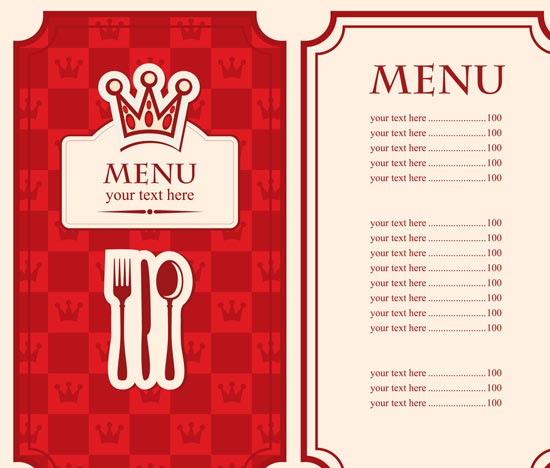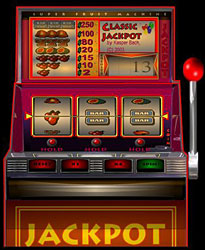Gambling has never been something that has appealed to me or that I’ve taken time to consider. To me, it has always just seemed like you’re pretty much snookered and are just going to lose money most of the time, unless you’re lucky. I have, however, considered the idea of chance and probability which wasn’t something I’d ever linked to gambling.
 We started off the lecture by considering a restaurant which had 2 choices of starter, 3 choices of main and 2 choices for dessert and how many different combinations the restaurant could serve. I worked this out by giving names to each dish e.g. Tomato soup, steak and chips and chocolate fudge cake. I then wrote out each starter and completed the meal by changing the main and dessert each time. I concluded that there could be 12 different combinations. This would be a good starter activity in the classroom to get children thinking about the probability of getting a certain selection of dishes.
We started off the lecture by considering a restaurant which had 2 choices of starter, 3 choices of main and 2 choices for dessert and how many different combinations the restaurant could serve. I worked this out by giving names to each dish e.g. Tomato soup, steak and chips and chocolate fudge cake. I then wrote out each starter and completed the meal by changing the main and dessert each time. I concluded that there could be 12 different combinations. This would be a good starter activity in the classroom to get children thinking about the probability of getting a certain selection of dishes.

 A die is one of the most commonly used objects within probability and is used a lot in gambling. It is unlikely I will use gambling as a main tool to teach probability, however, I will use the idea of rolling a die. Some activities could include getting children to record what they roll for a certain number of throws or asking them to calculate the probability of rolling certain numbers e.g. the chance of rolling a 5 on a 6-sided die i.e. 1/6. They could then look at throwing a 5 on both 6-sided dice i.e. 1/36. The probability of this happening is actually calculated by subtracting the probability of it not happening away from 1. I have explained this below:
A die is one of the most commonly used objects within probability and is used a lot in gambling. It is unlikely I will use gambling as a main tool to teach probability, however, I will use the idea of rolling a die. Some activities could include getting children to record what they roll for a certain number of throws or asking them to calculate the probability of rolling certain numbers e.g. the chance of rolling a 5 on a 6-sided die i.e. 1/6. They could then look at throwing a 5 on both 6-sided dice i.e. 1/36. The probability of this happening is actually calculated by subtracting the probability of it not happening away from 1. I have explained this below:
One throw chance of not doing it was 35/36
Second throw chance of not doing it was also 35/36
So 35/36 x 35/36 = chance of not doing it……?
= 0.945
So 1 – 0.945 = Chance of doing it once
= 0.055 or 5.5%
 Before this input, I would not have known that this can be used in gambling and slot machines to work out the chance of winning or losing. Maths is used when designing the likes of slot machines as the probability of an outcome multiplied by the pay-out/prize for that combination will never equal to 100%. This means that slot machines will always win and earn a profit, never the player. Additionally, this can be ‘weighted’ so that bigger prizes or frequent smaller prizes are paid out, resulting in more money for the casino (Holme, 2017).
Before this input, I would not have known that this can be used in gambling and slot machines to work out the chance of winning or losing. Maths is used when designing the likes of slot machines as the probability of an outcome multiplied by the pay-out/prize for that combination will never equal to 100%. This means that slot machines will always win and earn a profit, never the player. Additionally, this can be ‘weighted’ so that bigger prizes or frequent smaller prizes are paid out, resulting in more money for the casino (Holme, 2017).
Heads or tails is another way maths could be used in the classroom to explore probability. John Kerrich who was a prisoner of war in World War II must have reached a point of complete boredom and desperation that he flipped a coin 10,000 times (Holme, 2017). You would normally assume that it would land on heads 5,000 times and tails 5,000. Incorrect. The coin landed on heads 50.67% of the time meaning it was not a 50/50 chance. Furthermore, Stanford University found that the coin landed on the side it started 51% of the time out of 6000 flips (Holme, 2017). We explored this ourselves by flipping a coin and found that these theories may well be true.
Stefen Mandel (paulwherbert, 2010) is a prime example of using maths not luck. He won fourteen lotteries. He won the Virgina Lottery and knew he was going to win the £27 million before it was announced. Along with 2,500 Australian investors, he created a lottery pool by attempting to buy all the tickets to cover every possible combination. They each paid £4000 and bought tickets as Virginia had no laws on how many tickets a person could buy. They bought 7.1 million combinations at $1 each. However, trouble struck when a store refused to sell them anymore tickets. This meant that they were missing 10% of the tickets, meaning they were no longer guaranteed to win. Ultimately, they ended up winning and the maths had been worth it. I think this is crazy! I have a friend whose dad and his friend purchased as many Irish lottery tickets as they could and never won so they gave up. Instead, they decided that for one week they would enter the British lottery, the one week that their Irish lottery ticket would have matched the Irish lottery- how typical!
 There is more to gambling than just luck, there is fundamental mathematics behind it. For me, I don’t think that gambling is worth the time or the money unless you are crazy and rich enough to do as Mandel did. However, a lot of countries have now banned this technique so it’s probably not worth your while really! I think I will keep to the likes of rolling dice and flipping coins to explain chance and probability in my classroom!
There is more to gambling than just luck, there is fundamental mathematics behind it. For me, I don’t think that gambling is worth the time or the money unless you are crazy and rich enough to do as Mandel did. However, a lot of countries have now banned this technique so it’s probably not worth your while really! I think I will keep to the likes of rolling dice and flipping coins to explain chance and probability in my classroom!
Holme, R. (2017) ‘Counter intuitive maths MyDundee 2017 [Powerpoint Presentation]’ ED21006: Discovering Mathematics (year 2) (17/18). (Accessed: 9 November 2017).
Holme, R. (2017) ‘Chance and probability RH lecture 2017 [PowerPoint Presentation]’, ED21006: Discovering Mathematics (year 2) (17/18). (Accessed: 9 November 2017).
Paulwherbert (2010) Stefen Mandel. Available at: https://www.youtube.com/watch?v=4TqFp0efLK0 (Accessed: 9 November 2017).

